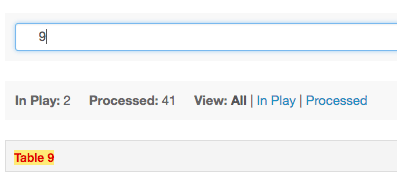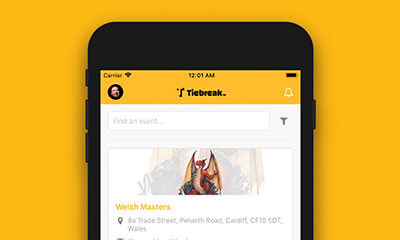Running Events
Don’t ignore data entry
This is the first in a new series of posts focusing on running events. Whether you’re planning to run a new event or you’re a seasoned veteran, hopefully there will be something for everyone in this series.
This time I’m going to discuss the importance of data entry.
Do I need to plan data entry?
It’s easy to overlook how important data entry is when planning an event. Especially when you have so much to organise as it is. Data entry happens on the day, but you can’t ignore it during the planning stages.
You need to have a clear picture of how data entry will work:
- How will players give you their results?
- Who will enter the results into the system?
- Do you have a computer ready for them?
- What software are you using?
- How long will it take?
Even with systems like Tiebreak taking care of all of your scoring and pairings, you still need to ensure you have a device to enter results on and an internet connection available, along with making sure your event’s scoring is set up and ready to go.
How long will it take?
Speed is the objective here, the faster you can get the results in the system to smoother your event will run.
For smaller events time isn’t usually an issue. Entering 8 game results per round can be done pretty quickly.
When it comes to larger events however, you need to have everything running smoothly.
I’ve worked data entry for many large events of 100+ players, and you start to notice trends with how results are handed in. It can vary between game systems slightly, but generally you’ll have a big rush at the end of each round.
This poses a problem for data entry. You want to get the results in and the next round generated as quickly as possible. You also want it to be accurate and for the person in charge of data entry not to get overwhelmed. If players are bringing score sheets, you can have a big queue form too as they wait to get them back.
Having a tray or basket for players to leave their score sheets means people won’t hang around as much. If players need their sheets back you can make a note of their table number and hand them back when it’s quiet or during the next round.
Tiebreak also has a “Print Round Sheets” option which will print a results slip for each table. At the start of the round you can walk around and drop them on the correct table, and then when results come in players don’t need to wait around for the sheet to come back.
It’s always sensible to build it a little bit of contingency between rounds too just in case you have some last minute results to enter.
Entering results quickly and correctly
Being familiar with the software you’re using will help speed up data entry a great deal. Tiebreak for example includes a search bar, where you can search by a player’s name or the table number to quickly jump to the appropriate game.

Accuracy is also important too. Taking a couple of seconds to double check the result you’re entering is probably one of the most important steps.
Conclusion
Accurate and fast data entry is one of the most important aspects of your event running smoothly.
It’s important to plan how the data entry process will work. How players give your their results, who will enter them and whether you need extra time in your schedule for it.
I’m always thinking of new ideas for the data entry process on Tiebreak to help speed up the data entry process and help with accuracy. Having the on screen results screen match the paper version, and searching for games for example. Even writing this article has given me another idea to add to the list!
If you’ve done data entry at an event in the past and have any tips or ideas let me know in the comments below.

 Changes are afoot! HUGE Tiebreak update on it's way soon...
Changes are afoot! HUGE Tiebreak update on it's way soon...  Service Downtime
Service Downtime  Announcing the Tiebreak Player Companion Mobile App
Announcing the Tiebreak Player Companion Mobile App